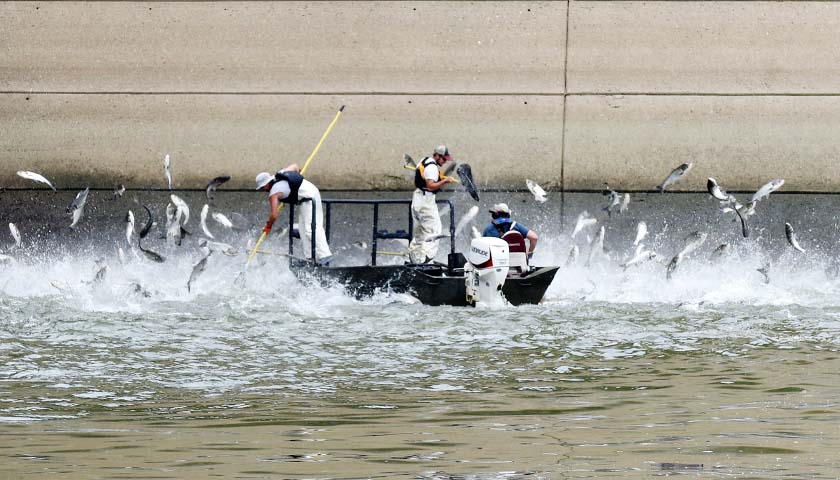The Tennessee Valley Authority (TVA) recommended in their final programmatic environmental assessment to install what’s called a bio-acoustic fish fence (BAFF) that includes sound signals, directional strobe lighting, and a bubble curtain in order to keep the invasive species of Asian carp from Tennessee rivers.
According to the assessment, the species “has the potential to threaten native ecosystems, rare and protected species, sports fisheries, and public safety, which can lead to reduced recreation, tourism, and property values; and ultimately impact local economies.”
The TVA notes in their detailed report that there are are four fish that fall into the Asian carp family; the bighead carp, the silver carp, the black carp, and the grass carp. The species was introduced to America in the 1960s and 1970s. The fish were imported to improve the water quality in fish farms, and after they were utilized for other aquaculture purposes were allowed to be released into the Mississippi River.
TVA stated that the Asian carp pose a threat to native species in the Tennessee rivers, along with fishermen. The invasive fish easily adapt to whatever waters they’re in and tend to eat native phytoplankton, zooplankton, mollusks, and aquatic vegetation. The black carp also tend to eat native freshwater mussels, which are endangered in Tennessee rivers.
The fish also pose a threat to fishermen, the TVA said, because when agitated, the fish will jump from the water and have been known to cause injury when colliding with a passenger in a moving boat.
The Asian carp have been traveling upstream by passing through navigation locks. They’re able to swim through the locks when they open for commercial and personal watercrafts to pass through. According to the assessment, if the carps are stopped from passing through the locks, they will not be able to continue to travel upstream and disrupt the Tennessee river ecosystems.
The BAFF system was tested in Barkley Lock, which was approximately 98 percent effective in deterring Asian carps from passing into the Lock. The assessment said the systems should be installed in a specific order of location, beginning with the Kentucky and Wilson locks.
The TVA did clarify that removal of the Asian carp was undertaken by partners, and is not a part of the TVA’s action.
The 192-page assessment said that the United States Fish and Wildlife Service will “[provide] funding to the Basin states to support implementation of high priority Asian carp management and control projects.” It also said that while the project completion date is reliant on funding, it is hoped to be finished by 2024.
– – –
Morgan Nicole Veysey is a reporter for The Tennessee Star and The Star News Network. Follow her on Twitter. Email tips to [email protected]
Photo “Bio-Acoustic Fish Fence” by U.S. Army Corp of Engineers CC BY-SA 2.0.








